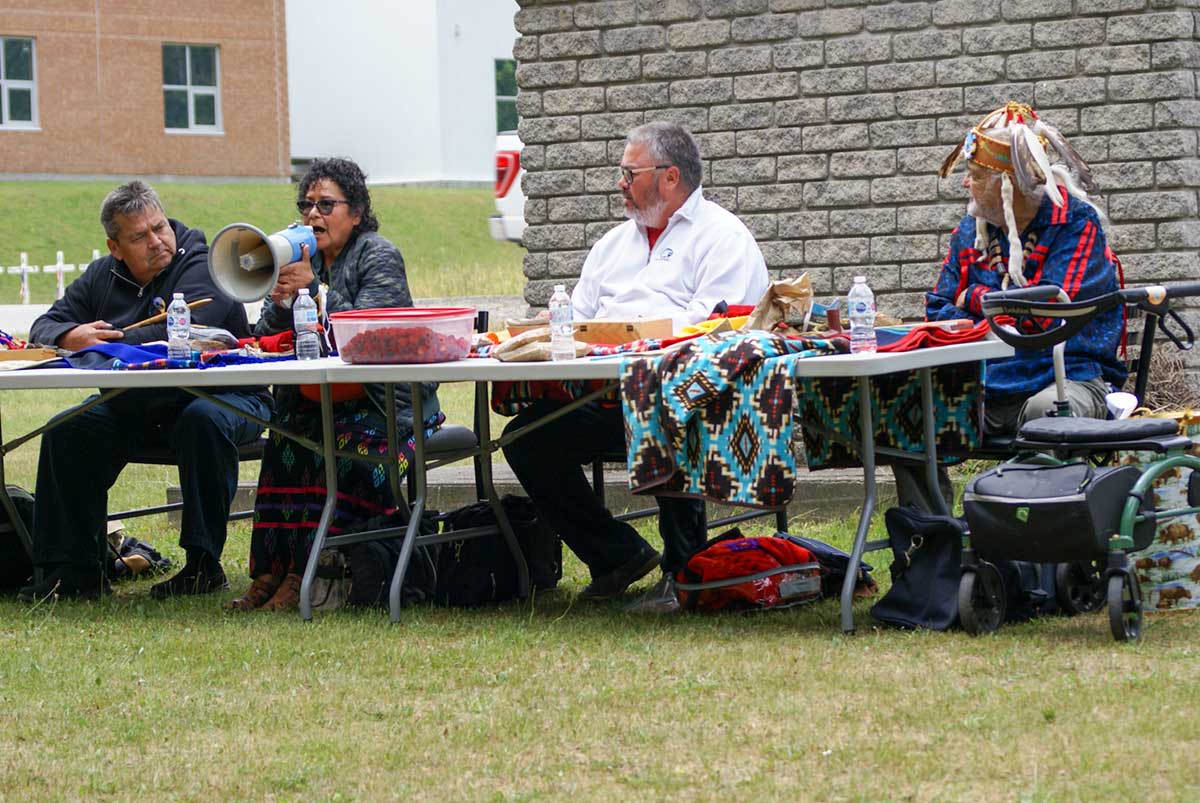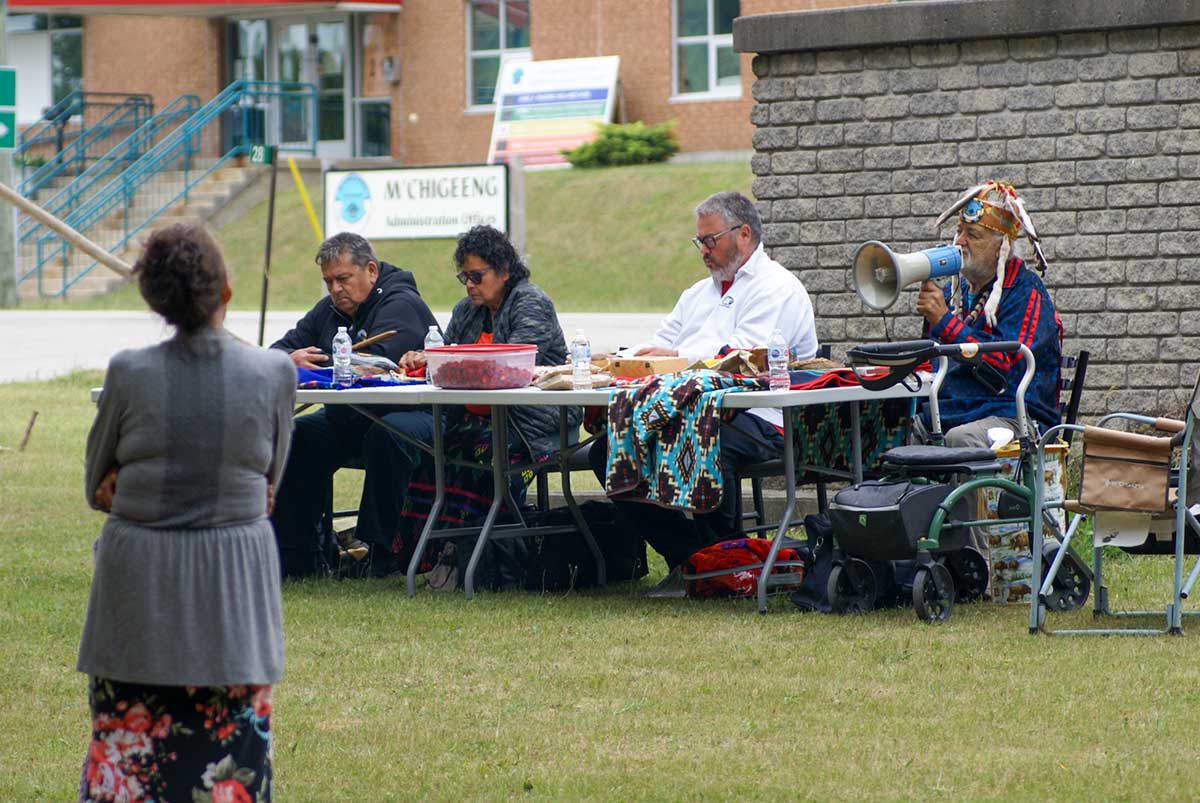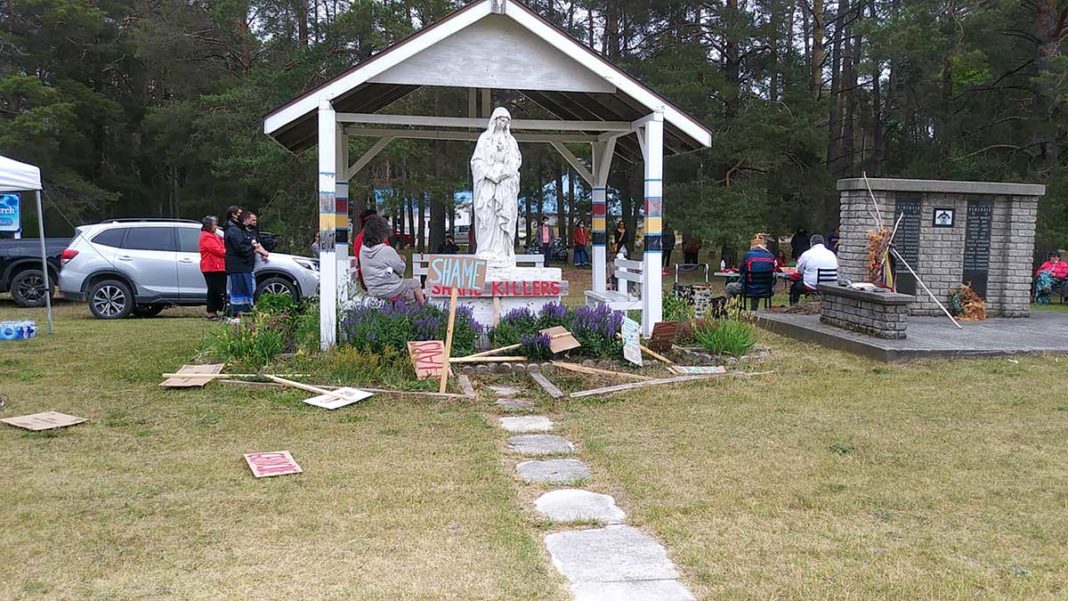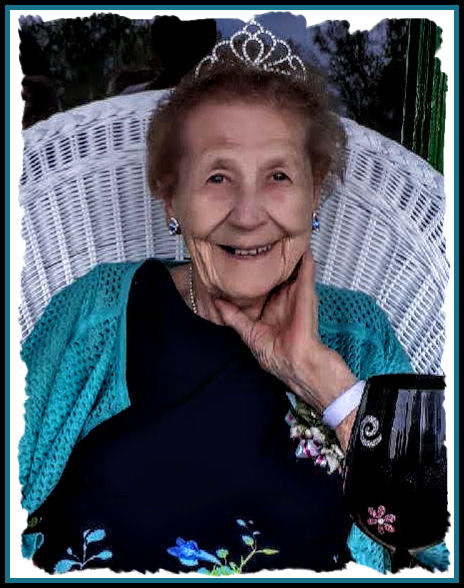M’CHIGEENG – M’Chigeeng band members stood together on National Indigenous Peoples Day to honour the 215 children found in an unmarked burial ground on residential school grounds in Kamloops, British Columbia.
M’Chigeeng First Nation Councillor Joseph Hare attended residential school in Spanish over five years. “It bothers me,” he addressed those present. “It seems like many of you don’t care very much about what happened to our kids. How can you not care about the children that were abused? The children that were killed? The children that were buried? How can you not care about the children that never went home? About the parents, grandparents and families who never saw their child again?”
The residential school system was started by the Canadian government and churches, he said. For M’Chigeeng children it was the Catholic church. “Some of the things you are going to hear were done to them. If you think that’s okay you can stay home and tell your children it doesn’t matter. But it does matter. As Anishnaabe people, we care.”
“We’re here today to honour, praise and remember the children that are buried across the country,” Councillor Hare continued. “There are thousands. We have to stand up for each other. When your family is suffering, I suffer. What the church did, it was wrong. Some people believe otherwise. I urge everyone to stand up, to stand your ground. That’s what this is all about.”
“I heard a story,” Councillor Hare said. “A young girl was sent to a residential girls’ school. As the girls were being walking into the school, one little girl was slower than the others and fell behind. The nuns slapped that girl on the side of her head. The girl fell down. She fell down and the nun kicked that girl down the stairway. That girl was never seen again.”
A table was set up at the Church of the Immaculate Conception grounds with pictures of M’Chigeeng people who went to residential school. Councillor Hare urged people to look at them. “I want to remind you that today is in support of those young people who died many years ago, who were not respected and who never had a chance to say goodbye. We need to tell the Church we are not happy with the way our children were treated.”
This is a day set by the government to recognize Indigenous peoples, said Ogimaa-kwe Linda Debassige. “This day has only been around for the last 25 years. We’ve been around much longer than that. We’re resilient.”
“The government says this is a day of learning. It’s supposed to be a day of celebration, but it has been overshadowed by the findings of the last few weeks. Over the last three weeks I have had many conversations with people from across Canada and locally. These findings have brought on additional trauma. There’s a lot of hurt but a lot of anger, too. These are not the easiest conversations to have. To move forward we have to remember where we came from. We have to recognize our intergenerational trauma and make our community better.”
Susan Hare was a residential school adjudicator for seven years. At the end of that seven years she had to seek treatment. “I am not a residential school survivor,” she said. “I thought hearing the stories wouldn’t bother me.”
“As an adjudicator, I learned about churches and their different spheres of authority. I learned how they operated and how the schools were different or the same. The Roman Catholic church has fought the hardest against residential school survivors. They used every legal motion the law allowed them. They fought it to the bitter end.”
Survivor payments were split between Canada and the Church. “The Church reserved the right to review our decisions,” continued Ms. Hare. “Survivors would only get their government cheque right away. To this day, I don’t know if all of the survivors received their money from the Church.”

“I learned about childhood trauma, loneliness and poor nourishment,” she added. “I learned how stress affects the health of children. Another thing I learned is that our bodies are different. Our ears, for example, are made differently. They are easily infected. We were told we were dirty. It also affected our children who were slapped by hand or by ruler on the side of the head. This damaged our children’s heads more than it did white people’s.”
“I learned about pedophiles and how they operate. I learned how they are generally charming and fun, how they know how to act around children and how to charm parents. I learned through adjudication and history that pedophiles could be moved from school to school,” she said. “I learned about power imbalances and how the Church was given authority over us.”
Ms. Hare completed around 100 adjudications. Several continue to haunt her, she said. One story sounds like a funny story, in the beginning. “There was a little boy. He was an old man when I heard his story. All the boys’ hair was red.”
“Within a couple months, the boy’s hair started to turn red too. It was just the children whose hair was red, not the priests or nuns or other staff. When the boy was home over the summer his hair turned black again. This happened with the other kids. When they returned to school all their hair was black. Within a few months all their hair was red again,” Ms. Hare continued.
“The water was bad. There was too much iron in the water and it was turning the kids’ hair red. Eventually, the boy got to work in the kitchen. He served the priests in the dining room where they had a big container on the wall. The container was filled with pure water, just like the boy had at home.”
“This was documented,” Ms. Hare said. In the file of an inspection agent for residential schools there was a note. The note said the Church had asked Canada for money to fix the water supply. Canada said the Church owned the land, the building and the water. They refused the request. The Church did fix the water the priests would drink, but not the water supply for the children.”

After more actual residential school stories, Ms. Hare announced there was a petition started for people to sign. The petition asks the Roman Catholic Church and the Jesuits to release their records of the Spanish Industrial Residential School for M’Chigeeng First Nation members. The petition requests the Church repay M’Chigeeng First Nation for the loss of their language, their culture and their way of life that was taken from them. When enough signatures are received the petition will be taken before council, she said. “We want to take some of that money the Church owes us and use that money to help us heal.”
“I never understand why we can take the side against our kids,” Councillor Hare said. “I left the churches a long time ago. I don’t need that church. I have my own religion and my own beliefs. It doesn’t bother me and it doesn’t hurt me to believe in my own people. It doesn’t hurt me to not believe what I was told when I went to residential school.”
The day also included a pipe ceremony, an honour song was sung, as was a song about thunderbirds. The pipe carriers talked about the prayers they offered. A sacred fire was kept throughout the day and there were opportunities for anyone to share words at the microphone. Ogimaa-kwe Debassige and Councillor Hare had closing remarks.
The day should have been a day of celebration. The colour orange was prevalent and reminded everyone there is still trauma to heal within the community; there are still difficult conversations to have and the Church still owes Indigenous communities answers and accountability.






